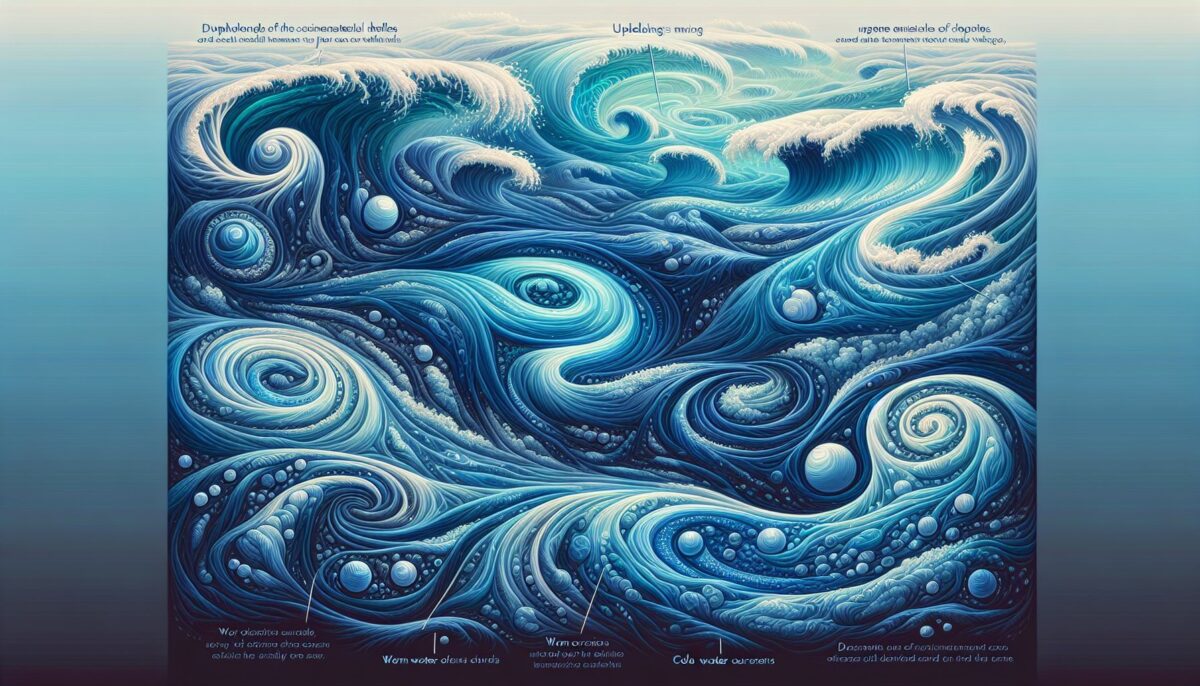In the grand theater of nature, nothing is as silently powerful and omnipresent as ocean currents. As if following an intricate choreography set by the cosmic dance of the Earth and the moon, wind, and the sun, these mighty streams crisscross the planet, defining not only the journey of water but also shaping the Earth’s climate and nurturing life.
The Swirling Story of Currents
Ocean currents ([1])(https://oceanservice.noaa.gov/education/tutorial_currents/welcome.html) are continuous and directed movements of seawater. They are generated by the forces acting upon the ‘water mass’ like the Earth’s rotation, the wind, the temperature and salinity differences, and the gravitational pull of the moon. The currents that run on the ocean surface are generally driven by wind and carry heat away from equator towards the poles, playing a crucial role in regulating the Earth’s climate. These currents constitute about 10% of all the water in the ocean. The other 90% is part of the deep-water section, influenced by water pressure, salinity variations, and heat exchanges.
Guardians of Global Climate
Ocean currents are the lifeblood of the planet. By transporting heat from the tropics to the polar regions, they regulate the Earth’s climate and influence local weather conditions. For instance, the Gulf Stream, a powerful, warm, and swift Atlantic Ocean current, keeps the North Atlantic more temperate, allowing the United Kingdom and Nordic countries to enjoy milder winters than their latitudes would normally permit ([2])(https://climate.nasa.gov/news/2613/not-just-another-stream/).
Ocean Highways: A Maritime Lifeline
Apart from climatic roles, ocean currents play a crucial role in maritime transportation, acting as natural highways for vessels. Knowledge of these currents helps mariners save both time and fuel. For instance, the Agulhas Current along the eastern coast of South Africa is swift and narrow and is popular with shipping lines.
Currents and Marine Ecosystems
Ocean currents also have a profound effect on marine ecosystems. Acting like a giant conveyor belt, they transport nutrients from the depths of the ocean to the surface, feeding phytoplankton and thus setting in motion the food chain in oceans. They also aid in the migration of fish and other marine animals, making them essential for the sustainability of marine biodiversity ([3])(https://ocean.si.edu/ocean-life/fish/how-currents-affect-marine-life).
When Currents Change Course
While ocean currents serve as stabilizing forces on Earth, changes in their pattern due to climatic aberrations can have profound and sometimes devastating impacts. Unusual ocean and atmospheric conditions can result in events like El Niño, warming the ocean surface and causing dramatic alterations in weather across several parts of the globe. On the other extreme, slowing or shutdown of the system of currents in the Atlantic, also known as Atlantic Meridional Overturning Circulation (AMOC), due to climate change can plunge Europe into a miniature ‘Ice Age’.
In the Tears of the Coral
Even the delicate yet vibrant coral reefs are at the mercy of the ocean currents. They rely on currents for their food, reproduction, and even to build their magnificent structures. Changes in current patterns can lead to coral bleaching events, putting these stunning creatures at risk.
Unleashing the Power: Currents for Energy
Ocean currents also hold immense potential for energy generation. Technologies are being developed to harness the kinetic energy of these currents for a renewable source of power, potentially giving birth to a new realm in marine energy.
A Lot More to Uncover
Thing is, we know more about the surface of the moon than about the oceans and currents that swirl beneath the waves on our own planet. And that’s why it is crucial to understand, respect, and protect these invisible powerhouses. The dance of the currents is complex, compelling, and is essential to life itself. Let’s take a moment to celebrate these unappreciated and underestimated planetary heroes – our ocean currents.
In the haunting words of Rachel Carson, the famed marine biologist, and conservationist, “In every outthrust headland, in every curving beach, in every grain of sand, there is a story of the Earth”. And the currents, the mighty currents, are the ones whispering these stories in our ears.
